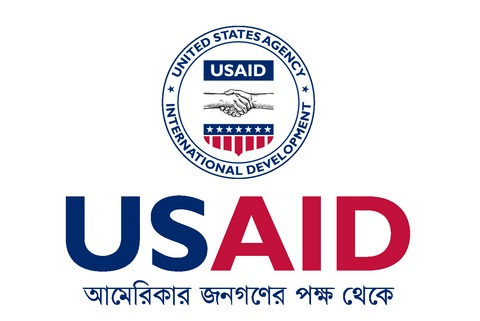
The spark ignited by Mary Wollstonecraft centuries ago has turned into wildfire and today, we can see the increased efforts to promote empowerment for women. True, women in any region of the world are as important in prosperity of economy as their male counterparts – but without their self-initiation, efforts by NGOs, local and even international authorities will not bring the desired fruit.
Women in Bangladesh
Bangladesh deploys more than 45% of its population in agriculture. Women have a significant role to play in agriculture. Since the independence, women have been responsible for most of the post-harvesting work. By the time Bangladesh entered 1984, the country has already had twice as much female workforce as it was after independence. The percentage of women in labor force is 57.2 percent as of 2011.
Barriers to Bengali Women
But despite being the leading gender, only 30.8% percent of women aging 25 or more have cleared secondary education. What’s worse is that only 19.7% women are in parliament, meaning very little advocacy for women’s rights. Bangladesh ranks 112th out of 146 countries in ‘Gender Inequality Index’ and 75th out of 136 countries in ‘Global Gender Gap Index’. Some of the following reasons play a big role in gender inequality in Bangladesh.
- Access to Markets: Bengali women have very little access to market. Restricted access means Bangladeshi women cannot trade confidently or productively.
- Education: Education, as mentioned above is also a role-player in Gender gap in Bangladesh. If the majority population – especially women – are deprived of education, then establishing a society where economic prosperity reigns essentially becomes a far cry.
- Fertility Rates: Low opportunities mean a high fertility rate which translates to added childcare, malnutrition and healthcare issues.
- Health Care: Bangladesh is also facing health issues, especially among women. From sex-selective healthcare to infanticide, Bengali women face hundreds of barriers in their road to empowerment. Women living in slums and rural areas do not have access to necessities like clean water and adequate sanitation. Women, compared to men are also subject to more traditional remedies for diseases and injuries.
- Patriarchy: Patriarchy rules in Bangladesh which means very few women actually have consent from their family to work or run a business.
- Financing: Bangladeshi women also face troubles when seeking a financer. Quick repayment does not provide women with enough time to save and repay feasibly. Also, due to patriarchy and male domination in Bangladesh, many a times, men in the family will be the only ones benefitting from the loan granted to a female.
- Low Wages: Women of Bangladesh are underpaid even more than the men. For every dollar a man makes, a Bengali woman only manages to make 12 cents.
- Worse Working Conditions: Working women in Bangladesh do not have access to safe and sanitary conditions and harassment-free environment. They also suffer from illegal pay deductions, unsafe transportation and lack of bargaining freedom.
- Violence: Increasing acid violence, rapes and more than a thousand cases of reported domestic violence every year also strike fear in the hearts of Bengali women, restricting them from work or small-scale business
Gender bias is more common in Bangladesh than most Sub-Continental countries. In order to address this cross-cutting issue, various organizations have taken initiatives for women empowerment in Bangladesh and restore the gender equality. To re-establish the lost balance, local government, non-profit organizations and various institutions from the private sector have now integrated gender into their programs. Developed nations including United States of America are taking interest in welfare of Bengali women.
American and international initiatives are about:
- Providing adequate resources.
- Increase women’s productivity level.
- Efficacy of management.
- Providing women better access to markets.
- Increase communication and reduce gender gaps.
- Training and educating women.
- Providing franchise opportunities resulting in self-employment and greater awareness.
- Making women more confident and competent to partake in business leadership by above mentioned training.
- Encouraging women for trades and programs to inform about international trades for Bangladeshi females.
Measures Taken By United States Agency for International Development
To tackle the current and impending issues, USAID – the agency of US federal government for administering foreign aid to civilians – plans to award a grant of $ 5-6 million. The core points to be addressed by USAID are women’s:
- Community leadership,
- Skill development,
- Decision-making, and
- Time-management.
Empowerment program will also:
- Incorporate findings and recommendations from analyses into project designs.
- Encourage partners to develop strategies.
- Facilitate knowledge with other donors in advancement and equality sub-groups.
- Provide a structure for its monitoring and tracking.
- Provide a structure for assessment.
Expected Results of the Program
USAID’s program for women empowerment in Bangladesh hopes to achieve:
- Better community leadership.
- Better decision making.
- Increase Bengali resources.
- Better time management.
- Increased acceptance of women and bread providers and entrepreneurs.
Despite these efforts by organizations, Bengali women must realize that unless they motivate themselves to step-up, violence and gender-bias might be tough for these bodies to eradicate.
Related articles
Women Entrepreneur in Bangladesh - Inspiring Wo...
Oct 30, 2014
Barriers to Women Entrepreneurs in Bangladesh
Sep 29, 2014
Small business ideas for women in Bangladesh
Aug 19, 2014
Women Entrepreneurship and Female Entrepreneurs...
Aug 18, 2014






